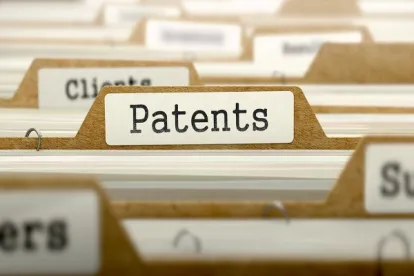Takeaway: A party should include arguments that account for the possibility that the Board will not adopt a party’s preferred construction in order to prevent the Board ruling in favor of the opposing party based on the rejection of the party’s claim construction.
In its Final Written Decision, the Board found that Petitioner had shown that claims 1-6 and 9-28 of the ’220 Patent are unpatentable, but that Petitioner did not demonstrate that claims 7 and 8 are unpatentable. The ’220 Patent discloses a system for detecting an event at a premises and supplying information regarding the event to a website that various authorized users can access.
The Board began with claim interpretation, noting that claims are construed according to their broadest reasonable interpretation in light of the specification. The Board determined that “website” does not require express construction for the purposes of this Decision.
Regarding the term “at least one imaging device coupled to the system controller for capturing event data associated with the event detected at a particular at least one sensor wherein the imaging device is activated by the controller upon receiving the signal from the particular sensor that is in an area covered by a particular imaging device,” the Board noted that Patent Owner disagrees with the construction provided in the Institution Decision that “the claim requires that the imaging device is activated by the controller upon receiving the signal from the particular sensor that is in an area covered by a particular imaging device, but not necessarily the image device activated.” Patent Owner’s construction requires that the sensor is covered by the imaging device that is activated, as opposed to the sensor being covered by “a particular imaging device.” The Board was not persuaded by Patent Owner’s argument and retained its interpretation from the Institution Decision. Specifically, the Board found that Patent Owner’s arguments would require the Board to improperly import an example discussed in the Specification into the claim as a limitation.
Regarding the term “wherein the at least one sensor is a maintenance detector for detecting an event that is a premises maintenance malfunction in the premises while the system is activated,” Patent Owner argued that this claim required that claim 1’s “the imaging device is activated by the controller upon receiving the signal” is triggered by claim 7’s “maintenance detector for detecting an event that is a premises maintenance malfunction” when the maintenance detector detects a maintenance malfunction and sends a signal.” Petitioner asserted that claim 7’s “maintenance detector” need not trigger activation of the imaging device recited in claim 1. The Board agreed with Patent Owner, and found Petitioner’s arguments unpersuasive.
The Board then turned to the ground of unpatentability – that claims 1-28 are obvious over Thomas and Fernandez. The Board first addressed claims 1-6, 9-12, and 14-28. Patent Owner argued that Petitioner did not demonstrate that the combination of Thomas and Fernandez renders obvious claim 1’s recitation of “at least one imaging device coupled to the system controller for capturing event data associated with the event detected at a particular at least one sensor wherein the imaging device is activated by the controller upon receiving the signal from the particular sensor that is in an area covered by a particular imaging device.” Petitioner argued that Thomas does disclose that the sensor is covered by an imaging device. The Board agreed with Petitioner, partially based upon the Board’s rejection of Patent Owner’s claim construction. The Board found that even if Patent Owner’s construction was adopted, Thomas and Fernandez still disclose the limitations of claim 1. The Board particularly noted that Patent Owner’s attack of the references individually was not enough to establish non-obviousness based on the combination of references. The Board further noted that combining the references amounted to no more than combining known technologies with predictable results, and was not persuaded by Patent Owner’s arguments to the contrary.
Regarding claims 7 and 8, the Board found that Petitioner has not presented sufficient evidence to support a finding of unpatentability. The Board noted that it did not adopt Petitioner’s construction of the terms in claim 7. Further, the Board did not find persuasive Petitioner’s declarant’s testimony that a person of ordinary skill would have been motivated to modify Thomas’s system in the manner required by the claims.
Regarding claim 13, the Board was persuaded contrary to Patent Owner’s assertions that Petitioner demonstrated that a person of ordinary skill in the art would have had reason to uniquely identify sensors. Therefore, the Board found that claim 13 is unpatentable.
Mobotix Corp. v. ComCam International, Inc., IPR2015-00093
Paper 21: Final Written Decision
Dated: April 28, 2016
Patent 6,975,220 B1
Before: Michael R. Zechner, Neil T. Powell, and Frances L. Ippolito
Written by: Powell
Related Proceeding: ConCam Int’l, Inc. v. Mobotix Corp., No. 2:13-cv-00798 (E.D. Tex.)



 />i
/>i

